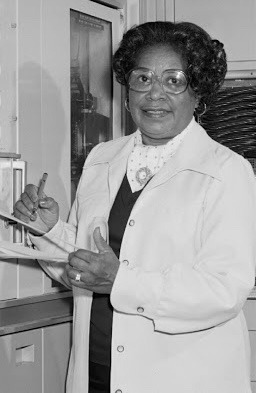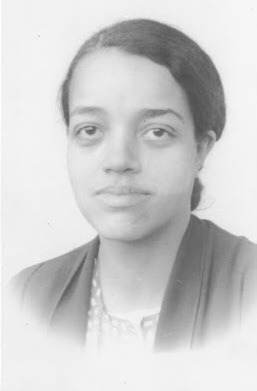NASA Telescope Reveals Largest Batch Of Earth-Size, Habitable-Zone Planets Around Single Star


NASA Telescope Reveals Largest Batch of Earth-Size, Habitable-Zone Planets Around Single Star
More Posts from Starlost and Others



shit man this got me emotional





the three BLACK WOMEN (mary jackson, katherine g. johnson, and dorothy vaughan) that changed astronomy and history.
mary jackson, an accomplished engineer, broke down barriers as the first african american woman to work as an engineer at NASA. her expertise and determination paved the way for future generations of women in the field.
katherine johnson, a brilliant mathematician, calculated the trajectory for john glenn's historic 1962 spaceflight, making her an invaluable asset to NASA's space task group. her calculations were pivotal in ensuring a successful mission
dorothy vaughan was a talented mathematician and the first african-american supervisor at NASA. she was instrumental in introducing computer programming skills to her colleagues, which played a significant role in advancing the space program.
through their dedication and groundbreaking achievements, mary jackson, katherine johnson, and dorothy vaughan left an indelible mark on history, proving that talent knows no boundaries, and that anyone, regardless of their background, can reach for the stars. their triumphs were celebrated in the 2016 film hidden figures, a personal favorite of mine.
i urge you all to read up on these magnificent women and their astronomical (no pun intended) impact on the world. celebrate and encourage black women in STEM. they are magical
please do not disrespect the moon

It is so cool to see such photos by beginners made with iPhone and eyepiece: “I know this may not be as good as many other photos but I tried my best with my beginners luck. Equipment : -Skywatcher 8 inch dob (manual) -iphone 7 (held manually) -10 mm eyepiece (super Plossl) Processing : Just photoshopped by -increasing contrast - fixing exposure - balancing whites and blacks Conditions: -very crappy skies (not good transparency) -light pollution: bortle 8-9 (inner city) - Jupiter not at opposition http://ift.tt/2FhOOrZ


Caldwell 103 by NASA Hubble




Close-Up of the Helix Nebula
This cropped version of the Helix Nebula mosaic shows cometary-filaments embedded along a portion of the inner rim of the nebula’s red and blue gas ring. At a distance of 650 light-years, the Helix is one of the nearest planetary nebulae to Earth.
Credit: NASA, NOAO, ESA, the Hubble Helix Nebula Team, M. Meixner (STScI), and T.A. Rector (NRAO).




Opportunity turned 14 this week!! How would you feel after 14 years on Mars?
-
 jewelart reblogged this · 5 years ago
jewelart reblogged this · 5 years ago -
 cybercataclysm liked this · 5 years ago
cybercataclysm liked this · 5 years ago -
 k0kichii-is-taken reblogged this · 5 years ago
k0kichii-is-taken reblogged this · 5 years ago -
 k0kichii-draws liked this · 5 years ago
k0kichii-draws liked this · 5 years ago -
 lenorewolf312 liked this · 5 years ago
lenorewolf312 liked this · 5 years ago -
 marylinegames liked this · 5 years ago
marylinegames liked this · 5 years ago -
 notisaidthechicken liked this · 5 years ago
notisaidthechicken liked this · 5 years ago -
 thunderapache-blog liked this · 5 years ago
thunderapache-blog liked this · 5 years ago -
 xxfr0stb1tt3n-cl0v3rsxx liked this · 5 years ago
xxfr0stb1tt3n-cl0v3rsxx liked this · 5 years ago -
 hookergreenisacolor liked this · 5 years ago
hookergreenisacolor liked this · 5 years ago -
 eastern-wind liked this · 5 years ago
eastern-wind liked this · 5 years ago -
 tumbimongo liked this · 5 years ago
tumbimongo liked this · 5 years ago -
 sprintingbear reblogged this · 5 years ago
sprintingbear reblogged this · 5 years ago -
 tngbabe liked this · 5 years ago
tngbabe liked this · 5 years ago -
 sprintingbear liked this · 5 years ago
sprintingbear liked this · 5 years ago -
 aw-reginum liked this · 5 years ago
aw-reginum liked this · 5 years ago -
 darkmeanderings liked this · 5 years ago
darkmeanderings liked this · 5 years ago -
 marumanmoon liked this · 5 years ago
marumanmoon liked this · 5 years ago -
 al-chemystic liked this · 5 years ago
al-chemystic liked this · 5 years ago -
 buurbujabu liked this · 5 years ago
buurbujabu liked this · 5 years ago -
 6mostlynaturals9 liked this · 5 years ago
6mostlynaturals9 liked this · 5 years ago -
 metalzoic liked this · 5 years ago
metalzoic liked this · 5 years ago -
 strawberry-fly liked this · 5 years ago
strawberry-fly liked this · 5 years ago -
 maejacrezz007 liked this · 5 years ago
maejacrezz007 liked this · 5 years ago -
 pacocruzblog reblogged this · 5 years ago
pacocruzblog reblogged this · 5 years ago -
 pacocruzblog liked this · 5 years ago
pacocruzblog liked this · 5 years ago -
 colleen77043 liked this · 5 years ago
colleen77043 liked this · 5 years ago -
 corset liked this · 5 years ago
corset liked this · 5 years ago -
 corna-void liked this · 5 years ago
corna-void liked this · 5 years ago -
 fotoartiste liked this · 5 years ago
fotoartiste liked this · 5 years ago -
 denahhi reblogged this · 5 years ago
denahhi reblogged this · 5 years ago -
 ansiedepre liked this · 5 years ago
ansiedepre liked this · 5 years ago -
 ri-torno reblogged this · 5 years ago
ri-torno reblogged this · 5 years ago -
 pantuflasstreet liked this · 5 years ago
pantuflasstreet liked this · 5 years ago -
 planeoftheeclectic liked this · 5 years ago
planeoftheeclectic liked this · 5 years ago -
 thegotdanguh liked this · 5 years ago
thegotdanguh liked this · 5 years ago

andrei, he/him, 21, made this at 14 when i was a space nerd but i never fully grew out of that phase so,,,,..,hubble telescope + alien life + exoplanet + sci fi nerd
245 posts